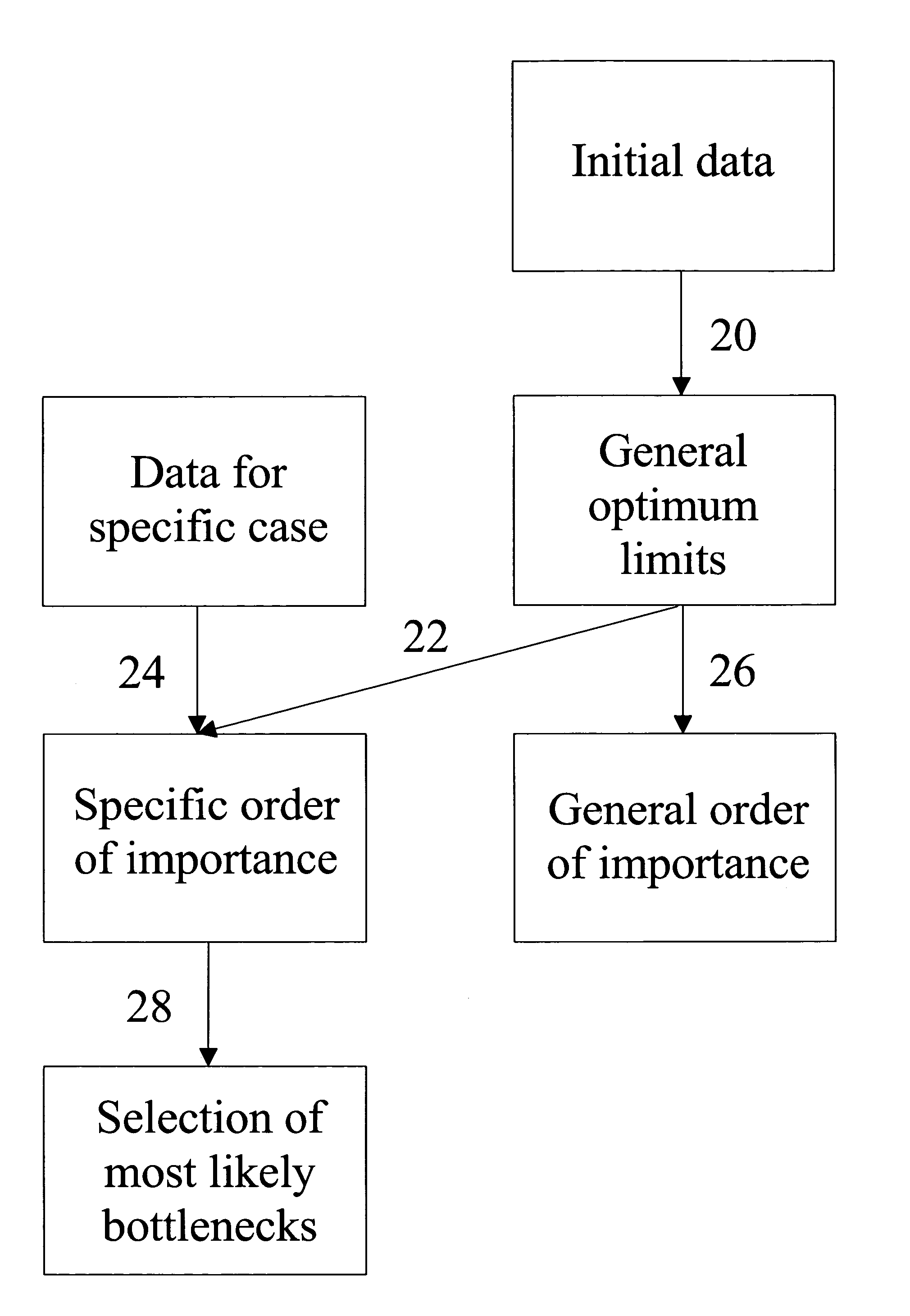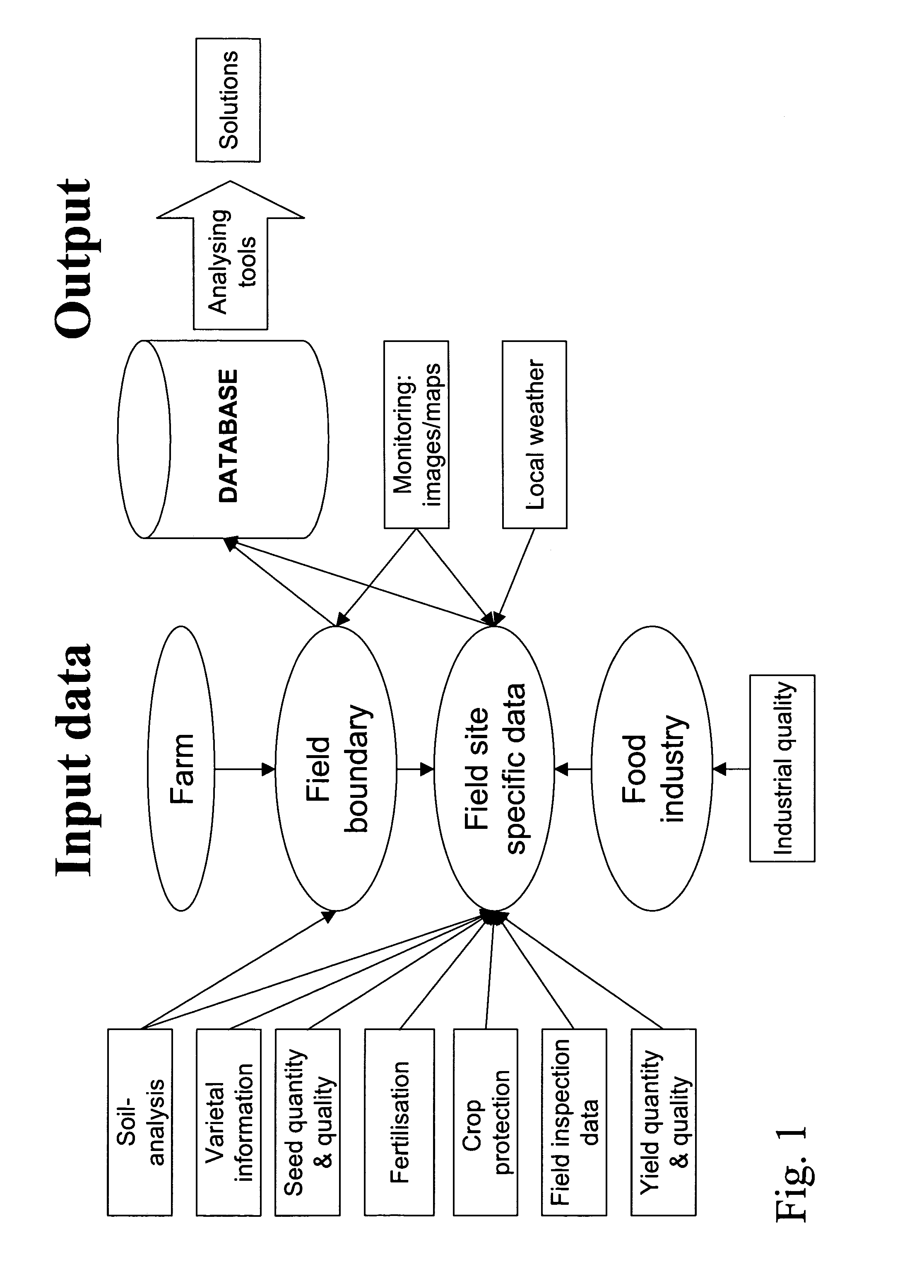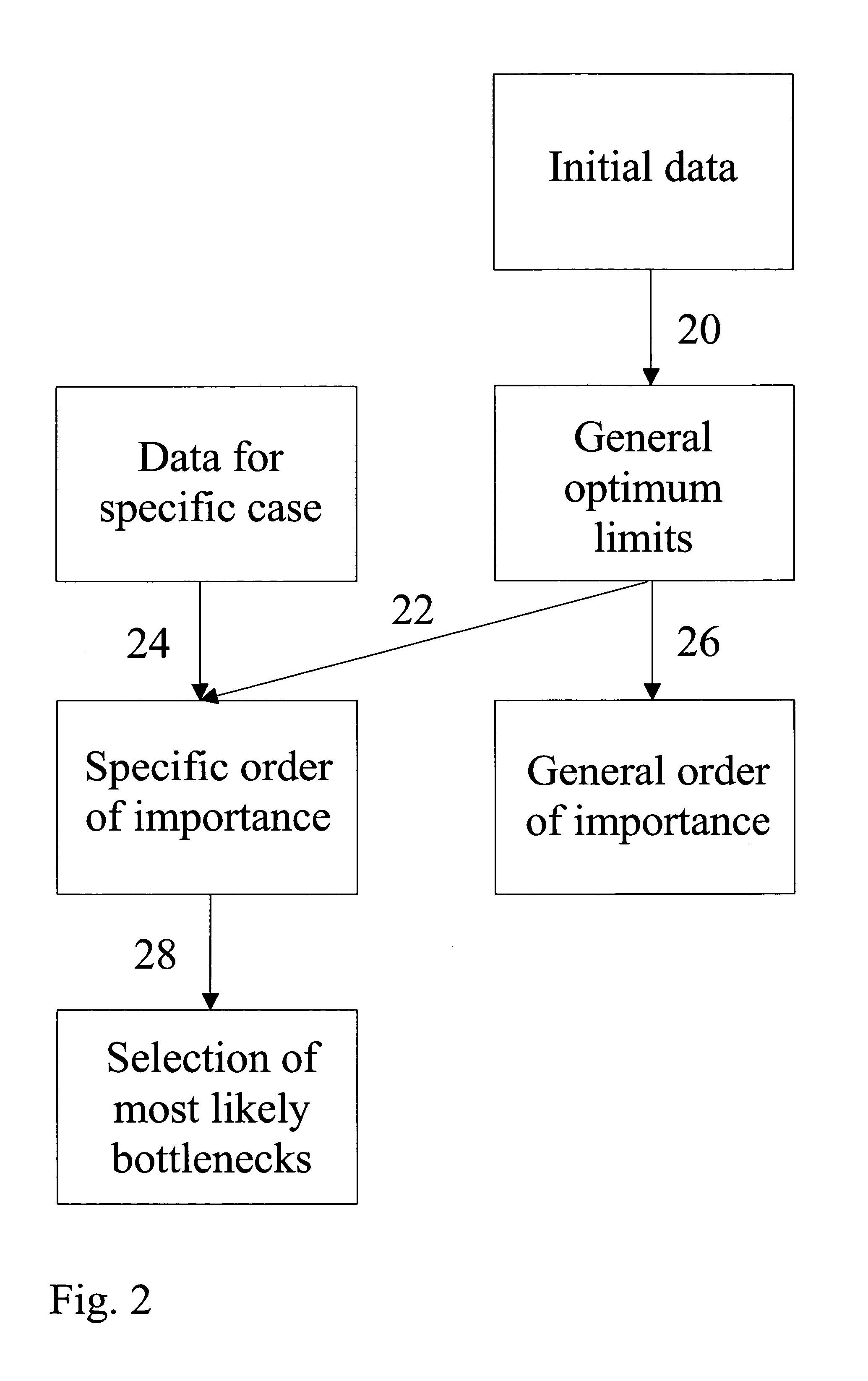Method and system for analyzing site-specific growth factors limiting production
a technology of growth factors and growth factors, applied in the field of method and system for analyzing site-specific growth factors limiting production, can solve the problems of not being able to direct corrective measures to such relevant factors, not being able to verify, and not being able to increase the harvest by adding nitrogen fertilizers by the farmer
- Summary
- Abstract
- Description
- Claims
- Application Information
AI Technical Summary
Benefits of technology
Problems solved by technology
Method used
Image
Examples
example 1
[0044]In a preferable embodiment of the invention, data acquisition and combination were carried out as follows:
[0045]During a test lasting for three years, barley was grown in various parts of Finland in several cultivations. Recognition data of farm and field section data of the cultivations were obtained from the IACS statistics (Integrated Administrative and Control System). Further, field section limits of each section were obtained from the information service center of the Ministry of Agriculture and Forestry in digital form. Thereafter, fertility data of each field / field section of the cultivation were determined, that is, the nutrient analysis of soil was carried out by determining phosphorus, potassium, calcium, magnesium, manganese, zinc and copper contents thereof, in addition to the pH value and the soil type. Based on the data of the cultivation journal of the farmer, section-specific information about the barley variety seeded, preliminary plant data from the past fiv...
example 2
[0047]In another preferable embodiment of the invention, starch yield of potato production was optimized as follows.
[0048]At Kokemäki river valley, potatoes for starch production were grown in 200 field sections for three years. Cultivation journal records, including soil type, soil fertility (nutrient contents of the soil, such as P, K, Ca, Mg, Mn, Zn, Cu), soil pH value, seeding density, preliminary plant data, information about plant protection, local weather, and volume of harvest, for each field sections were provided with site recognition codes permitting to combine desired data to obtain a site-specific record. Further, reception data, that is, quality data of harvests, marked with recognition codes, supplied as raw materials for starch industry was gathered, the data being the tuber harvest of the farmer (tons / ha), starch percentage (%) thereof, and accordingly, the starch yield (kg / ha), provided with corresponding site recognition codes. Thereafter, fertility data of potato...
example 3
[0054]In a preferable embodiment of the invention, characteristics of silage for milk cows were optimized as follows.
[0055]An extensive test cultivation series was carried out for three years, cultivating grass for silage on twenty thousand (20 000) field sections. Factors having an influence on the efficiency of the production of grass silage, and also factors reflecting the nutritive value thereof having significance with respect to milk cow business (i.e. for milk production) were measured. Such factors include the mineral content of silage (e.g. K, Ca, Mg, P, Zn, Mg, Mn), harvest time and number of reapings, energy content of the silage produced and units reflecting the digestability thereof. Each of the determined factors was marked with of the side recognition code field, and the data thus marked were combined to obtain a site-specific record.
[0056]Next, optimum range for each important mineral of the harvested silage was determined with respect to the amount of the silage pro...
PUM
 Login to View More
Login to View More Abstract
Description
Claims
Application Information
 Login to View More
Login to View More - R&D
- Intellectual Property
- Life Sciences
- Materials
- Tech Scout
- Unparalleled Data Quality
- Higher Quality Content
- 60% Fewer Hallucinations
Browse by: Latest US Patents, China's latest patents, Technical Efficacy Thesaurus, Application Domain, Technology Topic, Popular Technical Reports.
© 2025 PatSnap. All rights reserved.Legal|Privacy policy|Modern Slavery Act Transparency Statement|Sitemap|About US| Contact US: help@patsnap.com



